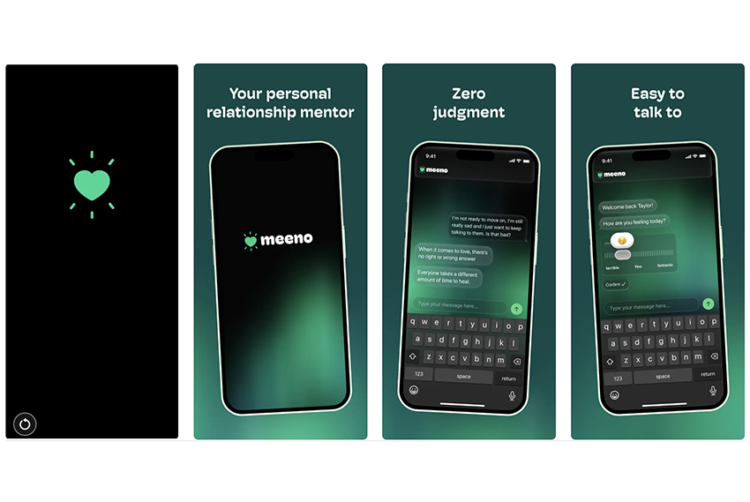5 future signals — and the startups spearheading them

Opinion
From programming for the masses to inserting more humanity into AI, these are the things that will impact consumers and businesses over the very long term.
Around this time of year, the call goes out for a yearly trends deck.
I’m always wary of requests like this, as the idea of a technology being relevant for precisely one year before being superseded the following January is rather arbitrary.
I think we can do better.
After visiting a futuristic Helsinki tech conference last month and reading the second book in Cixin Liu’s masterful The Three-Body Problem series, I have landed on an idea: the art of very long-term planning.
Planning for the millennia
First, let’s take The Three-Body Problem (warning: minor spoilers follow). With a Netflix adaptation due in March, the Chinese sci-fi trilogy centres on an alien invasion fleet dispatched to destroy Earth, but not set to arrive for 450 years due to the vast distance of space to be crossed.
What follows is the story of humanity’s societal and technological preparations for the invaders; an epoch-spanning race where Earth must evolve its capabilities to match its foes before their arrival in half a millennia’s time.
It’s a great sci-fi concept, but it also raises big questions. If you knew a catastrophe was scheduled for a distant future, could you upskill your way to a solution over a long timeframe? Could you introduce a deep culture of innovation that unfolded across the ages, outlasted your tenure and that could be applied by your descendants?
Back in the real world, even though there is no alien invasion planned for the year 2474 (as far as I know), we do have climate change. Governments, citizens and businesses are having to think about solutions that apply across elongated timeframes — and within this is learning the art of long-term planning.
Planning for the decade
Second, the Finnish conference. For a few years now, we have been attending the Slush startup conference in Helsinki — a laboratory for far-sighted tech solutions that may not come to fruition for years.
Off the back of our visit, we produced a report looking at the forces shaping our decade, rather than the ensuing year.
The wider timeframe is in opposition to the idea that trendy technology is temporary and must be exploited before it is superseded. We wanted to encourage brands and businesses to invest in transformation over years, rather than short-term knee-jerk reactions to whatever the latest tech guru says is cool this week.
We witnessed emerging tech platforms set to impact consumers— and businesses over the longer term. Rather than calling them “trends”, we have identified five “signals”: the distant sonar ping from a beacon positioned a decade away. Almost like the clarion call of an alien world.
Here are the five signals — and five startups solving the challenges of the next decade.
1. Next-gen gaming from Versed
There are 3bn players globally and it’s set to rise. Yet the ratio of movie-makers to moviegoers is higher than the ratio of gaming programmers to game players. In future, we’ll need fewer movie-makers, but we’ll be in desperate need of more gaming programmers to feed audiences’ voracious appetites.
Start-ups like Versed are solving this. It allows non-programmers to use an AI large language model (LLM) to describe in plain English sentences the games they wish to create, while the LLM works away in the background to turn those words into programming language.
The upshot is that when anyone can code, the only limit is the human imagination.
2. Clean interfacing from Videobot
The average citizen gets 50 notifications a day or nearly 20,000 a year. A recent study discovered the presence of smartphones — even without use — creates a drop in cognitive capacity. There is growing concern about the cerebral effects of constant digital distraction. Essentially, the digital superhighway needs a thorough jet-wash.
Emerging tech platform Videobot thinks it can tackle this. Its stated aim is to make video, specifically interactive presenter-led vertical video, the default way to impart information, replacing the long scroll through columns of text.
The brand of the future will need clean comms for cut-through.
3. Extended sense from Zalando
The increasing digitisation of our lives is often attributed to increases in raw computational power driven by more efficient silicon chips. But it is also true that huge leaps in sensor technology have been the unsung hero in the development of tech like virtual-reality helmets or accelerometers for smartphones.
The next decade will see the sensor gain yet more sophistication, capturing more data from our world, with more accuracy.
Fashion company Zalando is currently working on a virtual try-on platform. Previously, virtual try-ons essentially superimposed the garment over a live image. Zalando’s new platform measures the weight of material, its folds and its weave to provide an accurate recreation of how a garment would fit, hang, stretch and fold while being worn.
Up until now, the internet has been able to provide a digital proxy for a physical product. The future may require more verisimilitude — the act of rendering something with complete accuracy — to convince customers to buy.
4. Lean, green computing from Gemesys
By 2030, AI training and storage could account for 3.5% of global electricity consumption. Like a laden truck with an inefficient engine needs more petrol to crawl up a steep hill, slow and burdensome AI could be a future threat to the planet. Faster AI will be better for sustainability.
Enter Gemesys, a company making dedicated AI-only chips that it claims are 100 times more efficient and 100 times faster. Although it may seem a distant problem, if AI is to be as ubiquitous as predicted, the eradication of effortful computation will be crucial to a more sustainable future.
5. Gentle tech from Meeno
Happiness among young people in the UK is at a low, with 89% feeling that social media negatively affects their health. Not necessarily because of the content, but because time spent staring at a screen may ordinarily be spent in the physical company of others.
This may be compounded by the prediction that, by 2039, one in seven people will live alone. We may be heading towards a more solitary, mediated, digitised life.
In response, ex-Tinder CEO Renate Nyborg has designed Meeno, an AI mentor for teens embarrassed about asking questions on sexual health, mental health and money worries. Meeno’s creators purposefully fed the LLM with the distilled wisdom of therapists and doctors to train the AI on how to advise young consumers.
In the future, we must prepare for the idea that AIs may deliver more humanity to our interactions than humans themselves.
Just plan!
Whether it’s recruiting the next generation of gaming creators, offsetting the environmental cost of a computing revolution or resolving to restore humanity to our technological interactions, what we saw in Helsinki were technologists working to prepare the ground for the challenges of the next decade.
As a futurist, I’ll always advocate for brands and businesses embracing the future. But like the scientists and engineers of The Three-Body Problem, true readiness for the future must come from a dedicated effort to foster a culture of innovation that touches every part of the business — and stays in place over time to track the inevitable ebb and flow of technologies as they evolve or perish.
That cannot be actioned overnight. There must be a vision. And that vision must run through the entire business — from root to tip, from CEO to CFO to CMO and beyond. Media and marketing should be included in that vision.
So don’t just wait for the future. Plan for it now.
 Phil Rowley is head of futures at Omnicom Media Group UK and the author of Hit the Switch: the Future of Sustainable Business. He writes a monthly column for The Media Leader about the future of media.
Phil Rowley is head of futures at Omnicom Media Group UK and the author of Hit the Switch: the Future of Sustainable Business. He writes a monthly column for The Media Leader about the future of media.




